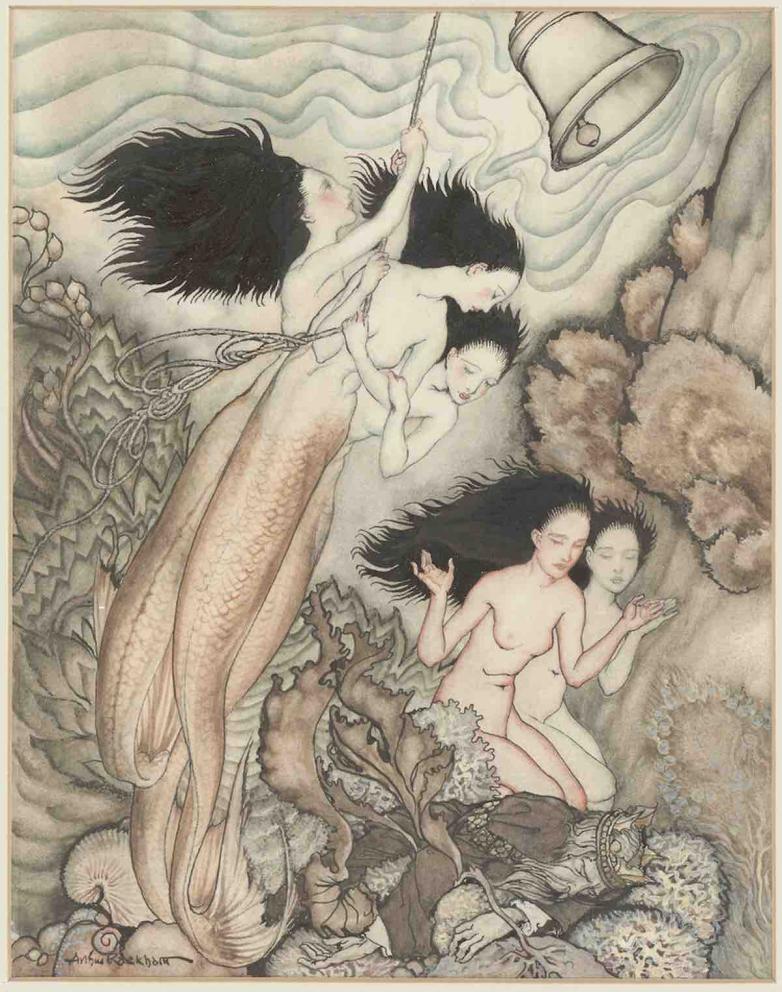The Magic of the Draughtsman on Exhibit in NYC

Arthur Rackham's The Tempest, 1926.
New York — The lines between art, science and magic are explored in a new exhibition at Christopher Bishop Fine Art. The Magic of the Draughtsman: Images of the Occult presents nearly 20 Old Master and early modern drawings from the 16th to the beginning of the 20th century. Many of the works are being exhibited in New York City for the first time. The exhibition is on view in the gallery through December 18, 2020, and will be available in an online viewing room. A fully illustrated online catalogue will accompany the exhibition.
From witches and satyrs to angels and mermaids, the exhibition surveys pre-modern views of the occult, mysticism, and alchemy, topics that often neither science nor philosophy can fully address. Among the highlights are images from mythology, religion, and Shakespeare, which have inspired artists through the ages.
A drawing by Jacopo Ligozzi (Italian 1547-1627) presents a musical competition, The Contest of Apollo and Pan c. 1590. Ligozzi, who was often commissioned by the Medici family of Florence, was interested in the power of images to be a conduit for prosperity, in order to bring about a golden age. He may have viewed the drawing as a talisman to ward off evil. The drawing is on public view in New York for the first time.
A mysterious calm pervades an intriguing underwater scene as mermaids toll the bell for Shakespeare’s dead king in The Tempest. The 1926 drawing by Arthur Rackham (British 1867-1939) underscores the expression “sea change,” which was coined by Shakespeare in the play. “Full fathom five thy father lies…/ Nothing of him that doth fade/ But doth suffer a sea-change/ Into something rich and strange.”
Another Shakespearean character from The Tempest was depicted by the painter John Trumbull (British/American, 1756-1843), who was friends with America’s founding fathers and became famous for his historical paintings of the American Revolutionary War. His drawing of Prospero, 1784, one of Shakespeare’s most enigmatic characters known for his use of magical powers, could be a metaphor for American optimism and ambition.
The Magic of the Draughtsman also includes a drawing by a draughtswoman. The only surviving work attributed to the artist Anna Hoffman (Swiss, born 1622-3) depicts a scene that could be termed white magic. The resurrected Christ reveals himself as a messiah to two surprised pilgrims at dinner in The Supper at Emmaus. The drawing is dated c. 1642 and is inscribed in a way that speaks volumes about how women artists were described during the Renaissance. The copy reads in German on the back of the drawing as “by Hoffmann’s daughter in Basel.” Anna Hoffman’s father was Samuel Hoffmann (1591-1648), the Swiss painter who trained in Rubens’ studio. Recent scholarship has shown that the rest of her work and her name were lost to history.















